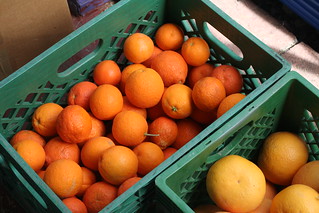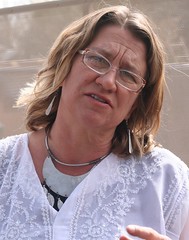There are many valiant gleaning initiatives in the U.S., but I haven’t seen any that also count integrating refugees into American life as part of their mission. Except, that is, the Iskashitaa Refugee Network.
Last month, I had the opportunity to visit with the Tucson, Ariz., operation and was impressed with their range of programs and passion. Also impressive: the annual 75,000 pounds of food gleaned, mostly from backyard trees, and redistributed to local food relief groups.

Founded and led by Barbara Eiswerth, the organization focuses on empowering refugees through gleaning produce, but also by teaching food preparation, E.S.L., marketing, sewing and crafting. In and around Tucson, Iskashitaa sells goods they make to help fund the operation (here’s a downloadable Iskashitaa catalog).
Iskashitaa started in 2003 when Eiswerth and refugee students began mapping the location of locally-growing produce not being used, mostly in front and backyards. With homeowners’ permission, the group soon began harvesting and redistributing fruit. In arid Tucson, that mostly meant a variety of citrus, from kumquats to tangelos to grapefruit.
 These days, Iskashitaa volunteers–a mix of refugees and Tucson lifers–rescue a variety of items, including squash, pomegranate, prickly pear, carob and dates. When there’s a real excess, they presever it through canning, cooking and drying, making jams, carob powder and date syrup.
These days, Iskashitaa volunteers–a mix of refugees and Tucson lifers–rescue a variety of items, including squash, pomegranate, prickly pear, carob and dates. When there’s a real excess, they presever it through canning, cooking and drying, making jams, carob powder and date syrup.
The term Iskashitaa in Somali Bantu (they were the original refugees with which Eiswerth worked) means working cooperatively. Eiswerth had to create the spelling because at that time, the Somali Bantu didn’t have a written form of their language. Years later, with guidance from Eiswerth and her team, they are writing new chapters in their lives.